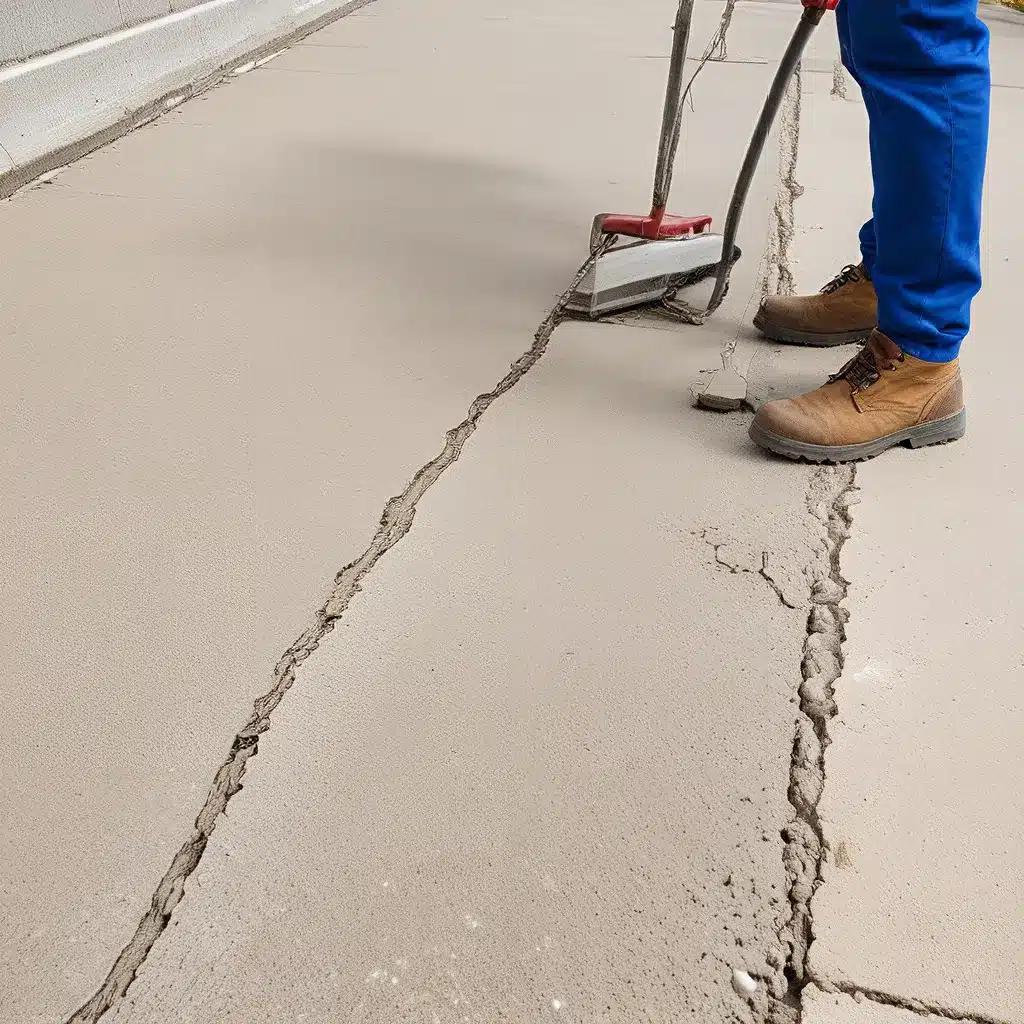
As a concrete contractor in Kansas City, providing high-quality services to both residential and commercial clients is at the core of our business. One of the most critical aspects of maintaining a healthy and resilient concrete infrastructure is ensuring a well-planned, proactive maintenance strategy. In this comprehensive guide, we’ll explore the importance of budgeting for concrete repairs, addressing both routine upkeep and unexpected issues that can arise.
Identifying Maintenance Needs: A Comprehensive Building Inventory
Crafting an effective annual maintenance budget starts with a thorough understanding of your building’s current condition. This involves conducting a comprehensive inventory of all concrete-related components and systems, including but not limited to:
- Foundations and slabs
- Walkways, driveways, and patios
- Retaining walls and other structural elements
- Exterior facades and finishes
- Garage floors and loading docks
By creating a detailed list of these elements, you can begin to prioritize maintenance tasks based on their urgency and importance. Address immediate safety concerns first, followed by preventive measures that can help avoid costly repairs down the line.
Partnering with a reputable concrete contractor in Kansas City can greatly assist in this process, as they can provide expert assessments and recommendations tailored to your specific property needs.
Budgeting for Proactive Maintenance
Once you have a clear understanding of your building’s maintenance requirements, it’s time to develop a strategic budget that addresses both short-term and long-term needs. This includes:
Routine Maintenance Tasks
Allocate funds for regular inspections, cleaning, and minor repairs to keep your concrete in optimal condition. This may include activities such as:
- Sealing cracks and joints
- Pressure washing and cleaning
- Repairing spalling or chipping
- Addressing discoloration and efflorescence
Preventive maintenance not only preserves the appearance and functionality of your concrete but also helps prevent more severe issues from developing, which can ultimately save you money in the long run.
Replacement and Upgrades
Building components have a finite lifespan, and budgeting for their eventual replacement is crucial. This may include:
- Replacing deteriorating waterproofing membranes
- Upgrading to more durable and energy-efficient concrete mixes
- Modernizing concrete surfaces with decorative finishes
By planning for these larger-scale projects, you can ensure that your building’s concrete infrastructure remains resilient and aesthetically pleasing.
Contingency Funds
No matter how well-planned your maintenance strategy may be, unforeseen issues can always arise. Set aside a portion of your budget for emergency repairs and unexpected concrete-related problems. This will help you respond quickly to any incidents, minimizing the risk of further damage and disruption.
Optimizing Your Maintenance Schedule
Developing a comprehensive maintenance schedule is essential for ensuring that all necessary tasks are completed on time and in a cost-effective manner. This schedule should include:
- Recurring inspections and preventive maintenance activities
- Timelines for one-time projects, such as roof or siding replacement
- Coordination with other building systems (e.g., HVAC, plumbing) to maximize efficiency
By monitoring this schedule regularly and making adjustments as needed, you can stay ahead of potential issues and maintain control over your budget.
Concrete restoration and repair services can typically be completed within 24-48 hours, minimizing downtime and disruption to your operations. Partnering with a responsive and reliable concrete contractor is key to ensuring a smooth and efficient maintenance process.
Budgeting for Unexpected Concrete Issues
Despite your best efforts, unexpected concrete problems can still arise, such as:
- Cracking due to soil settlement or weather-related stresses
- Water infiltration leading to structural damage
- Spalling or deterioration caused by exposure to the elements
When these issues occur, it’s essential to address them promptly to prevent further complications. Allocate a portion of your budget for these types of emergency repairs, ensuring that you have the resources to respond quickly and effectively.
Building maintenance budgets should also account for any necessary safety certifications and compliance requirements related to your concrete infrastructure, such as regular inspections of fall protection systems or load-bearing structures.
Prioritizing Maintenance Tasks
Balancing immediate needs with long-term goals is crucial when prioritizing maintenance tasks. Address any safety concerns or issues that could lead to significant damage or liability first, then focus on preventive measures and aesthetic improvements.
Break down larger projects into manageable tasks with realistic timelines and milestones to ensure efficient execution and prevent overwhelming your maintenance staff. This approach also helps maintain motivation and accountability among your team.
Maintaining Detailed Records
Keeping thorough records of all maintenance activities, including completed tasks, associated costs, and any issues encountered, is invaluable for future budgeting and planning. This documentation provides a clear history of your building’s concrete maintenance efforts, allowing you to identify recurring problems and implement more comprehensive solutions.
Regular monitoring and documentation also help you identify areas for improvement and ensure that your maintenance activities are both efficient and impactful.
Partnering with Concrete Experts
Developing and executing a comprehensive maintenance strategy can be a complex undertaking, but partnering with a reputable concrete contractor in Kansas City can make the process much more manageable. These experts can provide valuable insights, guidance, and practical support to help you:
- Assess your building’s current condition
- Prioritize maintenance tasks and create a budget
- Implement a proactive maintenance schedule
- Address unexpected concrete-related issues
- Ensure compliance with safety regulations
By collaborating with concrete specialists, you can reduce long-term costs, improve building efficiency, and maintain the value and integrity of your property.
Conclusion
Proactive maintenance is the key to preserving the longevity and functionality of your concrete infrastructure. By developing a strategic, well-planned maintenance budget, you can stay ahead of potential issues, minimize costly repairs, and ensure the safety and compliance of your building.
Remember, regular inspections, preventive measures, and a responsive approach to unexpected problems are all essential components of a successful concrete maintenance strategy. With the right planning and the support of experienced concrete professionals, you can safeguard your investment and maintain a high-performing, visually appealing concrete environment for years to come.

